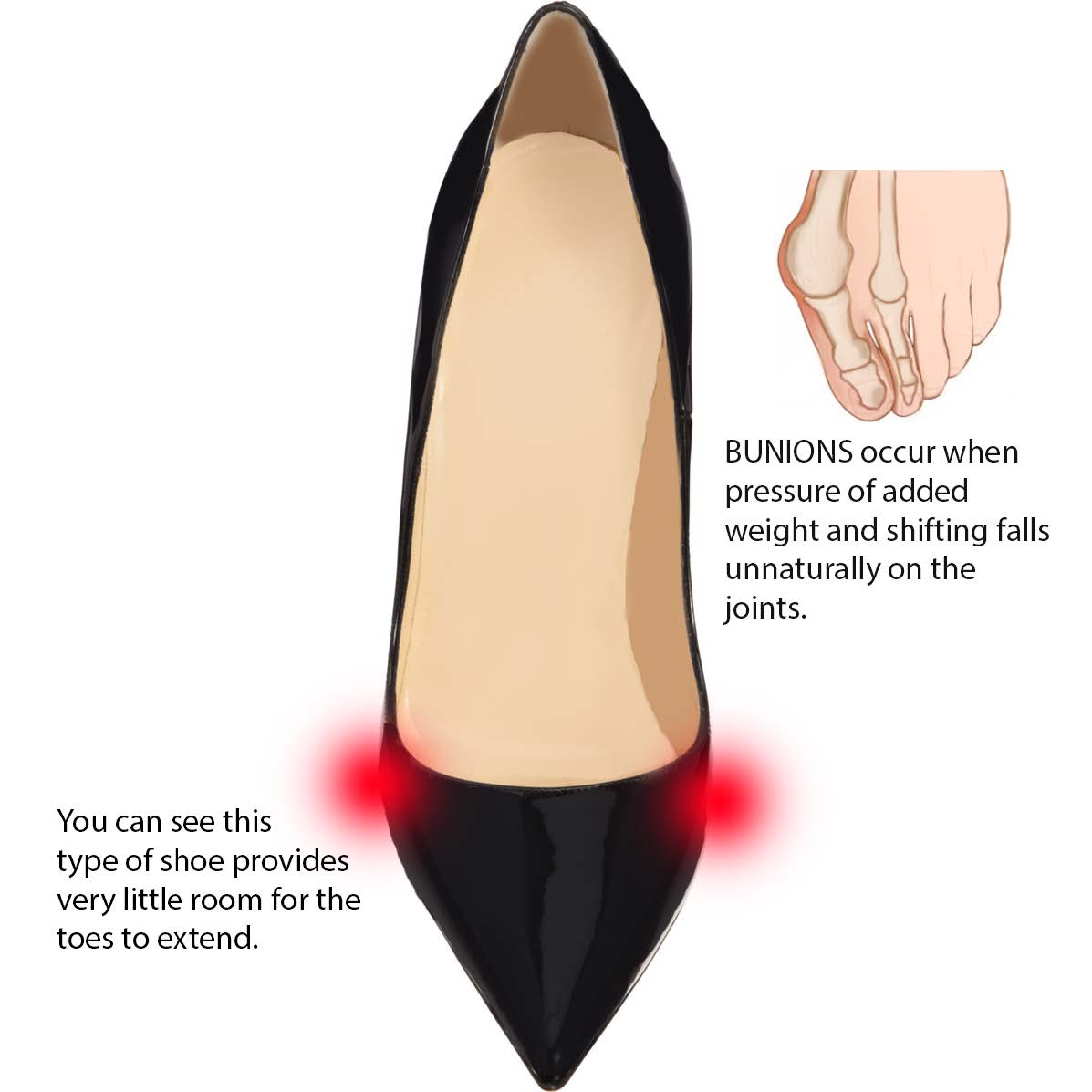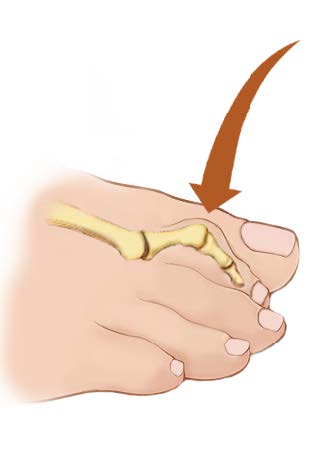free shipping desktop
How High Heels Affect Foot Health: Studies and Solutions for Better Footwear

The Impact of Footwear on Foot Health
Foot health is a critical aspect of overall well-being, yet many individuals unknowingly jeopardize it with their choice of footwear. High heels, in particular, are a common culprit, often linked to various foot problems. From plantar fasciitis to bunions, the adverse effects of wearing high heels are well-documented. Understanding the relationship between high heels and foot health is essential for making informed footwear choices. In this article, we delve into the latest research and expert opinions on how high-heeled shoes impact foot health and contribute to conditions such as metatarsalgia, hammertoes, and Achilles tendon issues.
Recent studies have confirmed that wearing high heels, where the heel is raised above the ball of the foot, adversely affects foot health. A 2023 meta-analysis published in BMC Public Health found that high-heeled shoes significantly alter gait and increase stress on the lower extremities, leading to potential long-term damage and pain (BioMed Central). Swelling and frequent foot pain caused by high heels can become severely aggravating and intolerable. The discomfort results from added pressure on the heel and forefoot, stretching of the plantar fascia, and shortening of the Achilles tendon. These issues can lead to several foot problems, including plantar fasciitis, metatarsalgia, bunions, hammertoes, and a shortened Achilles tendon that requires painful stretching to correct.
Additionally, another 2023 study highlighted the risks associated with worn-out shoes, which can cause improper alignment and increased joint stress, exacerbating foot and ankle issues (ScienceDaily, 2023). These findings emphasize the critical need for supportive and properly fitting footwear to maintain foot health and prevent chronic conditions. Wearing shoes that are too small restricts the space needed for the metatarsal bones to fully extend, limiting range of motion and causing muscle cramping and healing issues. The diagrams below illustrate the areas of excess pressure and the unnatural positions the foot bones are forced into. As shown, the metatarsal heads bear weight vertically, though they are intended to bear weight horizontally. Although the exact causes of hallux valgus (bunions) and other foot conditions are uncertain, let's examine how heels negatively affect your feet.
Joint Pain and Lack of Arch Support
The diagram below shows that high heels provide no arch support, leading to heel spurs and pain.
Bunions and Curved Toe Bones
Shoes that are too narrow and restrictive can cause the big toe to curve. The pressure and unnatural shifting from wearing heels affects the base of the joint on the big toe, causing it to turn inward.
Hammertoes and Toe Deformities
Hammertoes, a permanent deformity of the toe joint, are another foot condition exacerbated by inappropriate footwear. Hammertoes usually affect the second toe, but the third and fourth toes are also at risk.



Upon further observation, the use of shoes that are too narrow and restrictive appear to contribute to the curving shape of the big toe. The result of added pressure and unnatural shifting that occurs from wearing heels affects the base of the joint on the big toe causing it to turn inward (above diagram).
Hammertoes, a permanent deformity of the toe joint, is another foot condition that combined with inappropriate footwear can be traumatic to foot health. Hammertoes usually affect the second toe as seen here (left diagram), however, the third and fourth toe are also at risk.
Why Do Hammertoes Occur More in the Second Toe?
American Academy of Orthopaedic Surgeons (AAOS) notes that hammertoes often develop in the second toe, but they can also occur in other toes (AAOS). Let's explore the potential reasons behind this.
Anatomical and Biomechanical Reasons
1. Toe Length and Position:
- Adjacent to the Big Toe: The second toe is located next to the big toe, which often bears the brunt of weight and pressure, especially in individuals with a longer second toe or shorter big toe.
- Morton's Toe: A condition where the second toe is longer than the first, causing it to bear more weight and pressure.
2. Pressure and Footwear:
- Ill-Fitting Shoes: Tight, narrow, or high-heeled shoes can force the toes into a cramped position, leading to muscle imbalance and abnormal bending of the toes. The second toe, being longer or more prominent, is more susceptible to this pressure.
- Constant Pressure: Shoes that do not fit well can cause constant pressure on the second toe, leading to its bending at the joint and eventually resulting in hammertoe.
3. Muscle Imbalance:
- Flexor and Extensor Muscles: Imbalance between the muscles that flex (curl) the toes and those that extend (straighten) them can lead to hammertoe. The second toe often experiences this imbalance more due to its length and positioning.
4. Foot Structure and Mechanics:
- Flat Feet or High Arches: Abnormal foot mechanics, such as flat feet or high arches, can alter the distribution of pressure across the toes, with the second toe being more affected.
- Arthritis and Other Conditions: Conditions like arthritis can weaken the muscles and tendons, making the second toe more prone to deformity.
Causes of hammertoes include bunions, rheumatoid arthritis, and ill-fitting footwear. Corns and calluses, which are accumulations of dead skin cells, often accompany hammertoes because protruding toes rub against the shoe's toe box, causing hardened skin. These foot conditions, combined with prolonged use of restrictive footwear, can lead to intense pain and may even necessitate surgery in severe cases.
Although there is no definitive proof that wearing heels directly causes these foot conditions, it is clear that restrictive footwear can exacerbate or accelerate their development. As shown in the diagrams above, the foot gradually conforms to the ergonomically incorrect shape of the shoe and becomes roughened by the abrasive material.
Is It Worth It to Wear Heels?
Opting for appropriate footwear, even if it's not a designer brand, offers significant long-term benefits. The demand for well fitting shoes that combine innovation and style continues to grow, providing more fashionable options for those reluctant to give up high heels. Striking the right balance between fashion and comfort is essential for maintaining healthy feet.
Orthopedic shoes offer numerous benefits for individuals with foot conditions, including better support and reduced pain. To explore our range of stylish and fashionable orthopedic shoes and learn more about their advantages, visit our Women’s Orthopedic Shoes category.
Content found on our website is intended for informational purposes only and should not be used as a substitute for professional medical advice. It is not designed to replace a physician's assessment and judgment. Always consult your physician regarding any health concerns or medical conditions.
Last updated on 08/06/2024
About author:
Bobbie J. Brown is a seasoned marketing content writer for Flow Feet, specializing in foot health with over 10 years of experience. She has written extensively on foot conditions, effective management strategies, and the benefits of orthopedic footwear. Connect with Bobbie via email at: bobbie@flowfeet.com.

